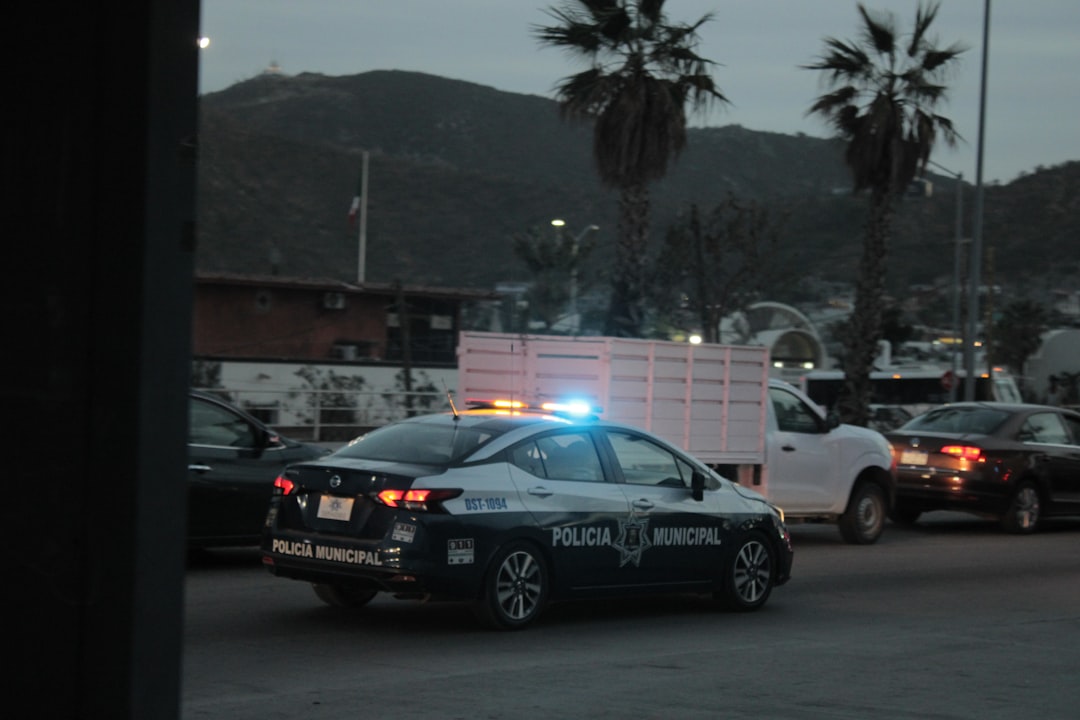The Lightning Route Sparked America’s Transportation Revolution

Picture this: while most American cities were still lighting their streets with gas lamps and horse-drawn carriages clattered over cobblestones, one Alabama city was already humming with electric power. Montgomery became the first U.S. city to initiate an electric streetcar system on April 15, 1886, with the Capital City Street Railway, also known as the Lightning Route. This wasn’t just ahead of its time—it was revolutionary. By the 1920s most cities and towns in America received electricity from either privately owned or municipal utility companies, making Montgomery’s electric achievement nearly four decades ahead of widespread electrification. The Lightning Route didn’t just move people; it moved history forward at breakneck speed. Think about it like this: Montgomery was driving electric cars while the rest of the country was still figuring out how to saddle horses properly.
A Belgian Genius Changes Alabama Forever

Charles Joseph Van Depoele, a Belgian-American inventor, developed this early streetcar technology and demonstrated the practicability of electrical traction. But Van Depoele wasn’t your typical inventor—he was basically the Elon Musk of the 1880s. In 1861, while at college, he produced his first light with a battery of forty Bunsen cells, later attending lectures at the Imperial Lyceum from 1864 to 1869. In 1869 he moved to the United States and took up residence in Detroit, where he made a living by manufacturing furniture. Van Depoele was that rare breed of person who could make beautiful church furniture by day and dream up electric transportation by night. James A. Gadboury had a controlling interest in the Capital City Street Railway Company and had seen Van Depoele’s track at the 1885 Toronto exhibition, meeting with Van Depoele and inviting him to electrify a Montgomery horse line. Sometimes the most world-changing innovations happen because one person saw something cool at a fair and thought, “We need that in Alabama.”
When Mules Met Their Match

During the early weeks of 1886, 25-foot power poles set 100 feet apart rose throughout downtown Montgomery, and the company ordered new streetcars equipped with “dynamo electric machine” engines. Imagine being a resident watching these alien-looking poles sprout from the ground like mechanical trees. Van Depoele tested his new system over several moonlit April nights while the expectant citizens of Montgomery were sleeping, and in the light of day, the company worked to allay public fears over safety since electricity on such a scale was still relatively new to Alabama. “There is more real danger… in a Texas mule’s heels than in all the electric motor system,” wrote a reassuring expert. The South Bend Tribune announced “The bray of the festive mule must go,” and by the winter of 1885-86, Van Depoele’s system was adopted in Minneapolis, Minnesota, Montgomery, Alabama, and other cities. The age of the electric machine had officially kicked the mule out of the transportation business.
The First Day That Changed Everything

Service started to run on the Court street line on April 15th 1886, and it was such a success that electrification was extended to the other lines, making Montgomery the first place in the world to have a city-wide system of electric transportation. Service began on April 15, 1886, and “The electric street railway in Montgomery is a success,” boasted the editor of the Montgomery Advertiser. The electrified routes along three busy downtown streets — Commerce, Court and Dexter — each ran for 16 hours a day, and more streets were soon added, eventually totaling 15 miles of track. Think of April 15, 1886, as the day Montgomery became the Tesla of American cities—except instead of making cars, they were revolutionizing how entire cities could move. The city’s existing horse-drawn system was converted to operate electric streetcars, which could travel up to six miles per hour, and with the introduction of the streetcar system, people were able to move away from the city center, leading to the development of suburbs.
Power Plants and Coal Mountains

The railway company’s two-story powerhouse on Tallapoosa Street operated a massive steam-powered generator that daily consumed more than 3,000 pounds of coal. That’s like feeding a mechanical monster the weight of a small car every single day just to keep the lights on and wheels turning. For a few months, mule-drawn streetcars operated alongside the new machines, but on June 22, 1887, the company completed the switch to a fully electric fleet. Picture the surreal scene: electric streetcars gliding silently past while mules still clip-clopped down the same streets, like watching the future and past share the same sidewalk. This system was the first city-wide application of electric streetcars in the United States and made Montgomery one of the first cities to depopulate its central residential areas through transportation-facilitated suburban development. Montgomery accidentally invented urban sprawl while trying to solve transportation problems—talk about unintended consequences.
America Follows Alabama’s Lead

Near the end of 1887, thirteen North American cities had electric railways in operation; nine of these systems were designed by Van Depoele. Montgomery didn’t just solve its own transportation problems—it became the template for urban America. Montgomery, Alabama, established its electric streetcar system nicknamed the Lightning Route on April 15, 1886, while by the end of 1881, New York, Boston, Philadelphia, Baltimore, Montreal, Buffalo, San Francisco, Cleveland and other cities had Brush arc lamp systems for lighting only. By 1902, some 15,000 miles were in service across the country (accounting for 97% of all such operations), an astounding jump of 70% in only twelve years. Montgomery was like that friend who discovers a great restaurant and suddenly everyone wants to eat there. As electric streetcar (trolley) systems were built in the 1880s, 1890s, and early 1900s, cities expanded, and many white city dwellers moved to new trolley suburbs. Alabama didn’t just participate in America’s urban revolution—it started it.
Birmingham Joins the Electric Party

The Birmingham Railway and Electric Co. was incorporated on May 5, 1890, as a consolidation of the Birmingham Union Street Railway Co. and the newly incorporated Birmingham Electric Co., after Montgomery became the first U.S. city to initiate an electric streetcar system. Birmingham was basically Montgomery’s little brother saying, “Me too!” That spring and summer, the first electric lines were strung along the lines from North Highlands to South Highlands and from Elyton to Avondale, with the J.G. Brill Co. ordering 24 small, two-ended covered cars, and the first car went into service on the Highlands line on Oct. 10, 1891. Birmingham’s earliest mass transit operator, the Birmingham Street Railway Company established in 1884, evolved through consolidation as the Birmingham Railway & Electric Company, which would operate Birmingham’s first electric streetcar in 1891. While Montgomery was the pioneer, Birmingham proved that Alabama was serious about electric transportation. Birmingham became one of only two southern cities (with Dallas) to operate the streamlined PCC car, and Birmingham Electric Company was a member of the industry group that created the PCC in the 1930s.
The Trolley Pole Revolution

In 1885, Van Depoele invented and demonstrated the first trolley pole, a device used by electric streetcars to collect current from overhead wires, introducing it publicly on a line installed temporarily at the Toronto Industrial Exhibition. This wasn’t just a piece of metal—it was the magic wand that made electric transportation possible. At first Van Depoele’s “traveler” overhead was used but later this was replaced by the under-running trolley pole, and this “Arched Suspender for Overhead Electric Conductors” was used to support overhead throughout the trolley-pole era. Sprague’s inventions included several improvements to designs for systems of electric streetcars collecting electricity from overhead lines, improving designs for a spring-loaded trolley pole that had been developed in 1885 by Charles Van Depoele. It’s like Van Depoele created the first smartphone and then everyone else added apps. This so-called troller was later mistakenly called a “trolley,” which became the ubiquitous nickname for streetcars, while Van Depoele’s system enjoyed more widespread use with a front-mounted pole trolley.
Mobile’s Maritime Streetcar Adventure

Until the 1890s, most streetcars in Mobile were drawn by mules or occasionally steam-powered “dummy” engines, but in 1892, businessman James H. Wilson received a franchise to build an electrically-powered rail line from Conti to Royal to New Jersey streets and back again. Mobile was like that person who shows up fashionably late to the party but still has a great time. Many of the streetcar lines carried riders between downtown Mobile and the suburbs, with Down the Bay covered by several lines including the Franklin St. Line which passed directly in front of homes, and streetcars provided fast and reliable transportation service that allowed people to live further away from where they worked, promoting suburban growth. The first streetcar line in Mobile was the Mobile & Spring Hill Railroad, chartered by the State of Alabama in 1860. Even Alabama’s port city understood that electric streetcars weren’t just transportation—they were community builders that connected neighborhoods like electrical veins pumping life through the urban body.
The End of an Electric Era

The Montgomery system operated until 1936 when it was replaced by municipal buses, and the 15-mile Lightning Route remained in operation for exactly 50 years, closing on April 15, 1936. Imagine celebrating your golden anniversary by getting shut down—that’s exactly what happened to the Lightning Route. In 1953 Birmingham’s Transit Company sold its remaining fleet of nearly-new streetcars to the Toronto Transit Commission and replaced all lines with buses, with Birmingham’s final streetcar route running from Ensley on April 19, 1953. Buses started to replace trolleys in the 1910s, as many commuters considered buses a modern, comfortable, even luxurious replacement for rickety, uncomfortable trolleys, and buses made business sense for transit companies because they were more flexible and cheaper to run. The irony is thick: Alabama pioneered electric transportation, only to abandon it for the internal combustion engine. Eventually, streetcar lines declined in popularity while personal automobiles and public buses became more commonplace, and by 1953, the last remnants of Birmingham’s streetcar fleet were sold to the Toronto Transit Commission in Canada.
When Alabama Was Ahead of America

In the 1920s, as electrification became increasingly common in Alabama’s cities and towns, many of the state’s farmers and rural residents viewed this new-fangled technology with outright suspicion, with light from an oil lantern, water from a bucket raised from a hand-cranked well, and cooking and heat from a wood or coal-fired stove being good enough for generations of rural families. By the end of the Roaring ’20s, most American cities were electrified, but by 1930, nearly nine in 10 urban and nonfarm rural homes had access to electricity while only about one in 10 farms did. Alabama’s cities were electric pioneers while rural America remained decades behind—it’s like having Wi-Fi in downtown while the countryside still used carrier pigeons. The electrification of households in Europe and North America began in the early 20th century in major cities and increased rapidly until about 1930 when 70% of households were electrified in the U.S., with the Rural Electric Administration established in 1935 bringing electrification to underserviced rural areas. Alabama’s streetcars were running on electricity before most Americans even had electric lights in their homes.
Legacy Tracks and Modern Dreams

A single Brill streetcar remains from the system, on display downtown in a park adjacent to the terminal railroad station, and today, Union Station is preserved as a historic landmark with a pre-1900 street car on display nearby. Since the centennial of the Lightning Route in 1986 there have been various initiatives to re-establish a light-rail system in Montgomery, and in place of light rail a system of tourist trolleys (diesel buses) known as the Lightning Route Trolleys currently operates in the city’s historic districts. In the mid 2000s, Birmingham Mayor Larry Langford proposed a “Heritage Streetcar Line” aiming to bring back streetcars to The Magic City, and the board suggested a 2.5 mile route that would connect the Birmingham Central Station to the Birmingham-Jefferson Convention Complex. San Francisco operates heritage streetcar lines with Muni F-Line Streetcar 1077 paying homage to Birmingham’s streetcar history, although the 74-year-old Presidents’ Conference Committee streetcar is not originally from Birmingham but designed to resemble the classic Birmingham design. It’s fitting that a San Francisco streetcar honors Alabama’s electric transportation legacy—sometimes the best way to remember the past is to keep it moving forward.
The next time you ride a modern light rail system or electric streetcar, remember that the rails of innovation were first laid down in Alabama soil. Montgomery’s Lightning Route didn’t just illuminate streets—it lit the way for America’s urban future. Who would have thought that the Heart of Dixie would become the electric heartbeat of American transportation?






